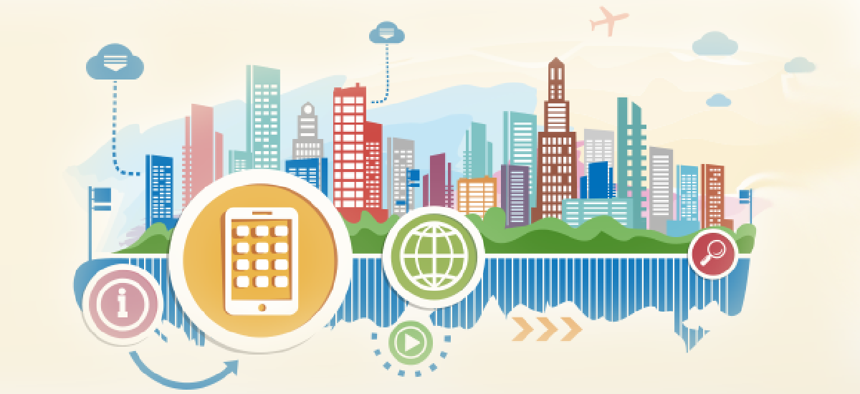What tech makes a city truly smart?


Connecting state and local government leaders
Cities across the country are using mobile, sensor and data solutions to improve livability for residents and efficiency for government.
A smart city uses information and communication technologies to enhance quality and performance of urban services, reduce costs and engage more effectively with citizens. And the smart city market has exploded over the last half-decade, growing from $8.1 billion worldwide in 2010 to a projected $39.5 billion in 2016, according to Onvia, a government business intelligence firm.
According to Onvia's report, the top applications include:
Mobile 311 apps, which act as a gateway to city services. The apps answer resident questions about parking and street closures also allow citizens use them to alert the city about broken traffic lights, leaky fire hydrants and graffiti. Philadelphia, Kansas City, Richmond, Va., Houston and Atlanta all have mobile application in development or currently running.
Digital/mobile payment systems, which allow residents to pay for parking tickets, public transportation and city taxes and fees with their smartphones In Harris County, Texas, bus riders purchase rides using their smartphones, and New York’s NYCServe e-Service Center lets users to pay for everything from property taxes to utility fees using credit cards or e-checks through a smartphone. Memphis, Seattle, San Jose and Baltimore are all developing digital payments services.
Intelligent traffic signals, which use sensors and artificial intelligence to optimize flow. Los Angeles saw a 16 percent improvement from automating citywide traffic signals, while Bellevue, Wash., expects to save $1.5 million annually from reduced travel delay costs through its adaptive traffic lights pilot.
Gunshot detectors, which use digital microphones to listen for evidence of gunshots, triangulate the location of shooters and direction of a shot, detect the type of gun and then alert the police. Some 90 U.S. cities have installed systems, including Los Angeles, San Francisco and Richmond, Va. In Camden, N.J., police said the system reduced gun incidents by 49 percent.
Body cameras for police, which can help increase public trust in law enforcement. In Rialto, Calif., the police department saw an 88 percent drop in citizen complaints as well as a reduced use of force as a result of the cameras. Use of body cameras has been on the rise, with camera sales increasing from 533 departments in 2013 to 3,400 in 2014, according to Onvia.
Smart parking applications, which can help reduce road congestion, pollution and boost economic activity. In Los Angeles, the ExpressPark system is expected to reduce parking-related congestion by 10 percent. New York’s smart parking application, meanwhile, shows users online maps of parking spots and lets users to pay for sports through their smartphone or other devices.

NEXT STORY: Public record requests made easy (for government)




